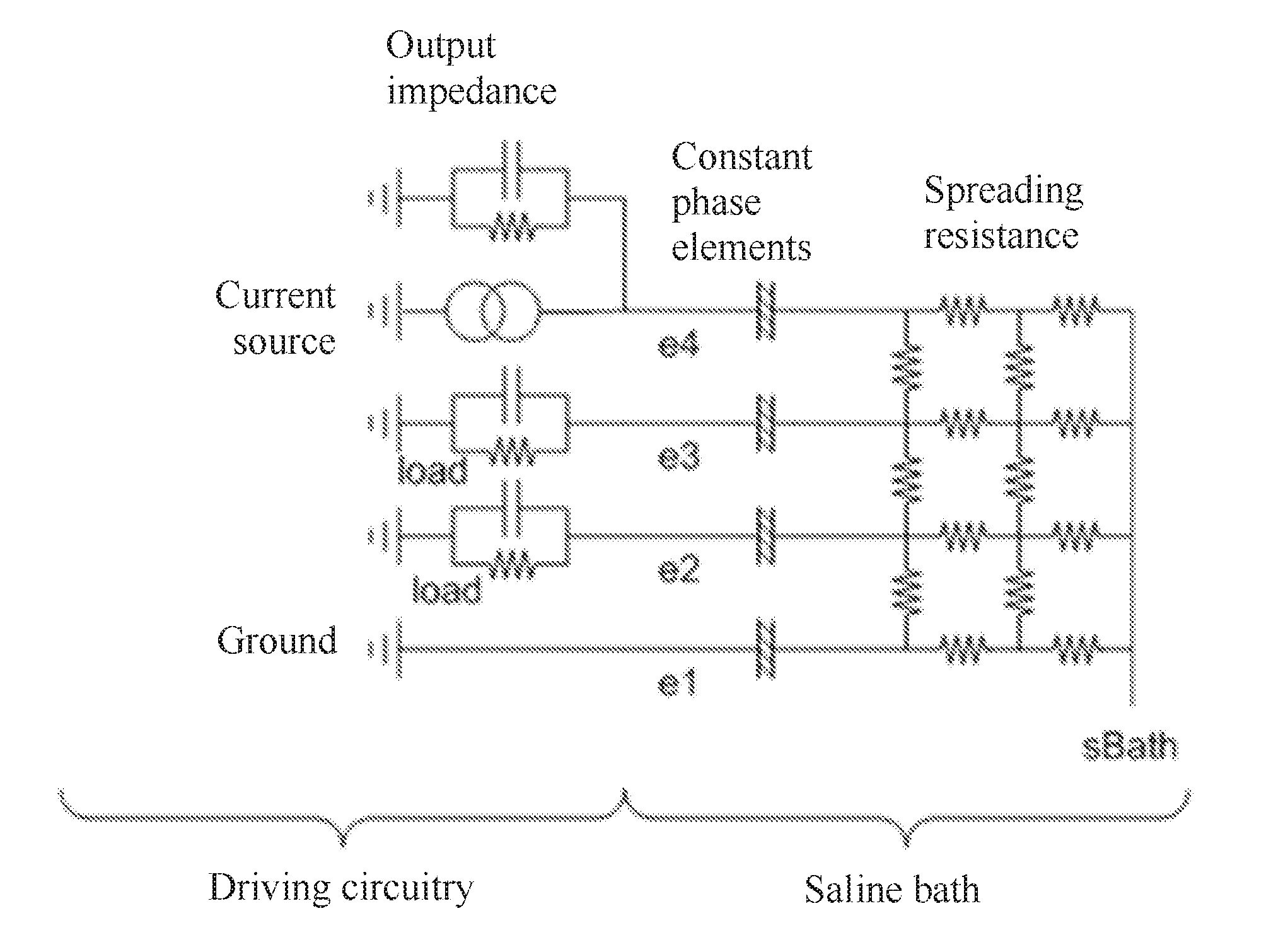Neural Measurement
a neural activity and measurement technology, applied in the field of neural activity measurement, can solve the problems of difficult task, difficult cap measurement, and significant obstacle to isolating the cap of interest, and achieve the effect of improving the prevention of dc charge injection
- Summary
- Abstract
- Description
- Claims
- Application Information
AI Technical Summary
Benefits of technology
Problems solved by technology
Method used
Image
Examples
Embodiment Construction
[0045]FIG. 2 illustrates a neural response measurement system in accordance with one embodiment of the present invention. Two sense electrodes each having a constant phase element (CPE) impedance of ZC are used to detect a neural response signal Ve arising in neural tissue of an implant recipient. A stimulus applied by stimulus electrodes of the implant (shown in FIG. 4) gives rise to the neural response, but also causes stimulus voltages Vs1 and Vs2 to be present on the sense electrodes. An input impedance of Zin is present at each input of the differential measurement amplifier.
[0046]The input impedance required in this embodiment of the invention is determined by noting that noise input is comparable to stimulation voltage, and that the goal is for the stimulus to induce a voltage (Vs1−Vs2) on the CPE of the sense electrodes which is less than the evoked response VE. Consequently the desired input impedance is given by:
ZIN>ZC(VS1-VS2)VE
[0047]In one embodiment, being a spinal cord...
PUM
 Login to View More
Login to View More Abstract
Description
Claims
Application Information
 Login to View More
Login to View More - R&D
- Intellectual Property
- Life Sciences
- Materials
- Tech Scout
- Unparalleled Data Quality
- Higher Quality Content
- 60% Fewer Hallucinations
Browse by: Latest US Patents, China's latest patents, Technical Efficacy Thesaurus, Application Domain, Technology Topic, Popular Technical Reports.
© 2025 PatSnap. All rights reserved.Legal|Privacy policy|Modern Slavery Act Transparency Statement|Sitemap|About US| Contact US: help@patsnap.com



